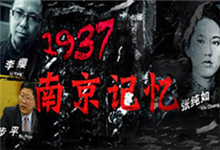|
Q&A:
|

• Q1: Why is the Chinese War of Resistance against Japanese Aggression said to have lasted 14 years? What stages did it go through?
• A: The September 18th Incident in Shenyang in 1931, in which Japanese troops engineered an explosion as a pretext for invading northeast China, marked the beginning of the Chinese War of Resistance against Japanese Aggression. >>
|

• Q2: Why is the War of Resistance a national turning point from decline to rejuvenation?
• A: Looking back on the humiliation and tragedy that spanned almost a century of modern Chinese history starting from the Opium War of 1840–1842, it is difficult to name any world power that did not participate in invasion and plunder in China. >>
|
|

• Q3: Why was the CPC the mainstay of Chinese united resistance?
• A: The War of Resistance was a people’s war involving the whole Chinese nation. >>
|

• Q4: Why was the China Theater the main eastern theater in the Global War against Fascism?
• A: The War of Resistance was an important part of the Global War against Fascism, and this made it possible for the China Theater to become the main theater in the East for this war. >>
|
|

• Q5: What incident marked the beginning of the War of Resistance?
• A: Since launching the Sino-Japanese War of 1894–1895, Japan had secured enormous political, economic, and military gains from northeast China and had come to regard the region as its lifeline. >>
|

• Q6: How was the puppet state of Manchukuo founded?
• A: In order to distract any potential international audience, cover up its act of aggression, and keep northeast China permanently under its control, Japan decided to form the puppet state of Manchukuo four days after the September 18th Incident in 1931. >>
|
|

• Q7: What signified that the Chinese united front against Japanese aggression was formally taking shape and how did it come about?
• A: A CPC manifesto and a statement by Chiang Kai-shek signified that the Chinese united front against Japanese aggression was formally taking shape. >>
|

• Q8: What marked the beginning of the Chinese nationwide resistance?
• A: The July 7th Incident (also known as the “Lugou” or “Marco Polo” Bridge Incident) marked the beginning of the nationwide resistance. >>
|
|

• Q9: How did the CPC direct war efforts in the resistance?
• A: The CPC advocated adopting a line of total resistance against Japanese aggression by the whole nation. >>
|

• Q10: How did the KMT direct war efforts in the resistance?
• A: After the July 7th Incident, the KMT authorities formulated plans for guiding the war effort. >>
|
|

• Q11: What was the first major victory the Chinese military won during the War of Resistance?
• A: In mid-September of 1937, the 5th Division of the Japanese North China Area Army rapidly approached the Inner Great Wall. At the same time, in coordination with the 5th Division, the main force of the Chahar Expeditionary Force of the Kwantung Army set off on a southward offensive from Datong. >>
|

• Q12: Victory at Tai’erzhuang in the Battle of Xuzhou
• A: The battle of Tai’erzhuang is the best known part of the Battle of Xuzhou. Located on the northern bank of the Grand Canal 30 kilometers northeast of Xuzhou, Tai’erzhuang was positioned on the canal and was the gateway to Xuzhou. >>
|
|

• Q13: What did the Chinese government do to develop the economy during the War of Resistance?
• A: Soon after Japan’s full-scale war of aggression against China began, Shanghai and the other coastal areas, where most of the industry was concentrated, fell one after another into enemy hands. >>
|

• Q14: What kinds of cultural and educational activities were drawn on in China to support the resistance effort and how were they carried out?
• A: After the outbreak of the nationwide War of Resistance, a Chinese united front was quickly formed bringing those from different cultural circles together. >>
|
|

• Q15: What was going on in Chinese diplomacy after the nationwide war of resistance began?
• A: After Japan launched its full-scale war of aggression against China, China became a focal point for the attention of the international community. >>
|

• Q16: How did Chinese people at home get involved and support the war of resistance?
• A: After the nationwide War of Resistance got underway, all classes and social groups acted on their own initiative to organize themselves, and launched all kinds of activities to contribute to the resistance. >>
|
|

• Q17: What did overseas Chinese do to assist China’s war of resistance?
• A: At the time of the war of resistance, there were close to eight million Chinese living overseas. >>
|

• Q18: What did people around the world do in support of China’s war of resistance?
• A: After the nationwide War of Resistance began in China, communist parties, and progressive and peace-loving people around the world expressed their strong condemnation of the Japanese aggression and their firm support for China’s resistance efforts. >>
|
|

• Q19: What kinds of new tactics were developed in China’s guerrilla warfare against Japanese aggression?
• A: The extensive mass guerrilla warfare at the resistance bases in northern China allowed the rapid development of joint defense by people’s militias, transport sabotage operations, land mine warfare, and tunnel warfare. In terms of battle command, militia groups in villages located within the same area no longer fought in isolation. >>
|

• Q20: The Hundred-Regiment Campaign
• A: Between May and June 1940, Germany occupied vast swathes of Western Europe and went on to launch large-scale strategic bombardments against Britain. >>
|
|

• Q21: The Chinese Expeditionary Force’s fight in Burma
• A: The Burma Road was an important transportation line for international supplies to and from China during the War of Resistance. >>
|

• Q22: The Truth about the Nanjing Massacre
• A: On December 13, 1937, after seizing Nanjing, the Japanese army carried out a bloody slaughter of unparalleled savagery in violation of international law. >>
|
|

• Q23: What kinds of biological warfare did the Japanese Army carry out in China?
• A: Japan began research on bacteriological weapons in the 1920s. >>
|

• Q24: How did the Japanese military carry out its system of sex enslavement in China?
• A: The Japanese military set up large numbers of “comfort stations” all across China, where women from China, Korea, and other countries were forced to serve as sex slaves for Japanese troops. >>
|
|

• Q25: How did China, the US, and Britain conduct strategic coordination during the Global War against Fascism?
• A: Although after the fall of 1943 the Axis had disintegrated and the Allies had seized the initiative, the armed forces of fascist Germany and Japan still fought on desperately. >>
|

• Q26: How did China participate in the founding of the United Nations?
• A: Following the fundamental shift in the global war against fascism, the Allies began to give more and more thought to major issues such as consolidating the victory of the war and safeguarding postwar world peace and security. >>
|
|

• Q27: The CPC Launched the First Strategic Counter-Offensives in the China Theater
• A: Beginning in the fall of 1943, the Japanese Army gradually lost its grip over its rear lines in northern China, whereas the Eighth Route Army, whose strength was increasing, enjoyed superiority in some areas and was the first Chinese army to launch offensives against the Japanese, paving the way for strategic counter-offensives in the China Theater. >>
|

• Q28: Japan’s Surrender and the Acceptance Ceremony in China
• A: At noon on August 15, 1945, a radio broadcast was aired throughout Japan in which Japanese emperor Hirohito read the Imperial Rescript on the Termination of the War, officially announcing unconditional surrender. >>
|
|

• Q29: The People of Taiwan’s Resistance against the Japanese and the Recovery of Taiwan
• A: After the Sino-Japanese War of 1894–1895, Japan took possession of Taiwan from China through the Treaty of Shimonoseki. >>
|

• Q30: How were the Japanese war crimes tried?
• A: After the end of World War II, the International Military Tribunal for the Far East (IMTFE) was established in Tokyo. >>
|
|
 0 Comment(s)
0 Comment(s) Print
Print E-mail China.org.cn, October 21, 2015
E-mail China.org.cn, October 21, 2015










































Go to Forum >>0 Comment(s)